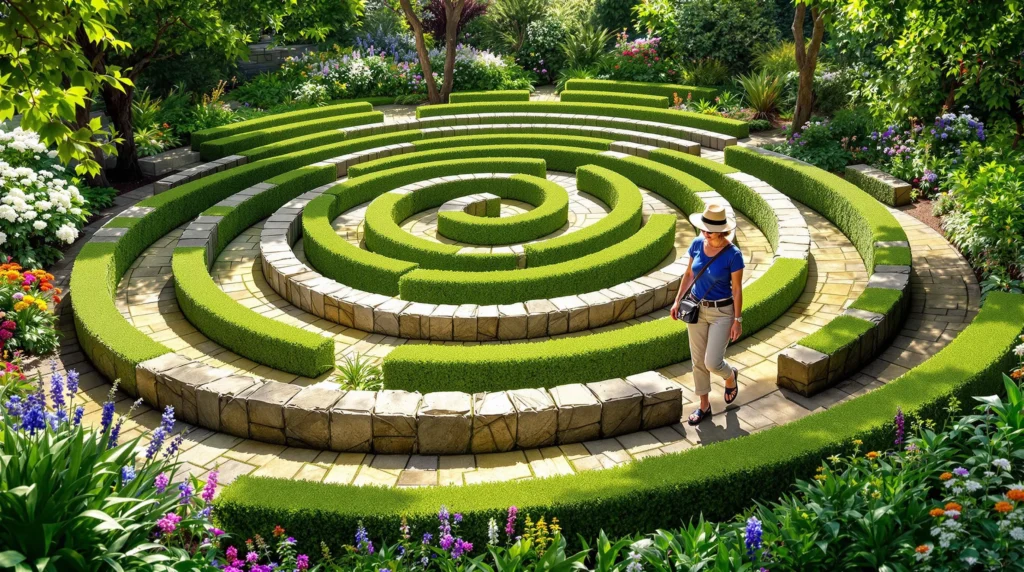Understanding the Ancient Art of Labyrinth Gardens
Labyrinth gardens trace their origins back thousands of years, appearing in diverse cultures from Ancient Greece to medieval Europe. Unlike mazes designed to confuse, traditional labyrinths feature a single path leading to the center and back out again, creating a meditative journey rather than a puzzle. The classic seven-circuit Cretan design remains one of the most popular patterns, symbolizing the seven planets known to ancient civilizations. You’ll find historical examples in cathedral floors like the famous Chartres Cathedral labyrinth in France, which pilgrims would traverse on their knees as a devotional practice. Modern interpretations maintain the spiritual essence while adapting to contemporary aesthetics and spatial constraints. Whether you’re drawn to their historical significance or meditative qualities, understanding these ancient designs will help you create a labyrinth garden that honors tradition while meeting your personal needs for reflection and beauty in your outdoor space.
10 Classic Labyrinth Patterns for Your Garden Space
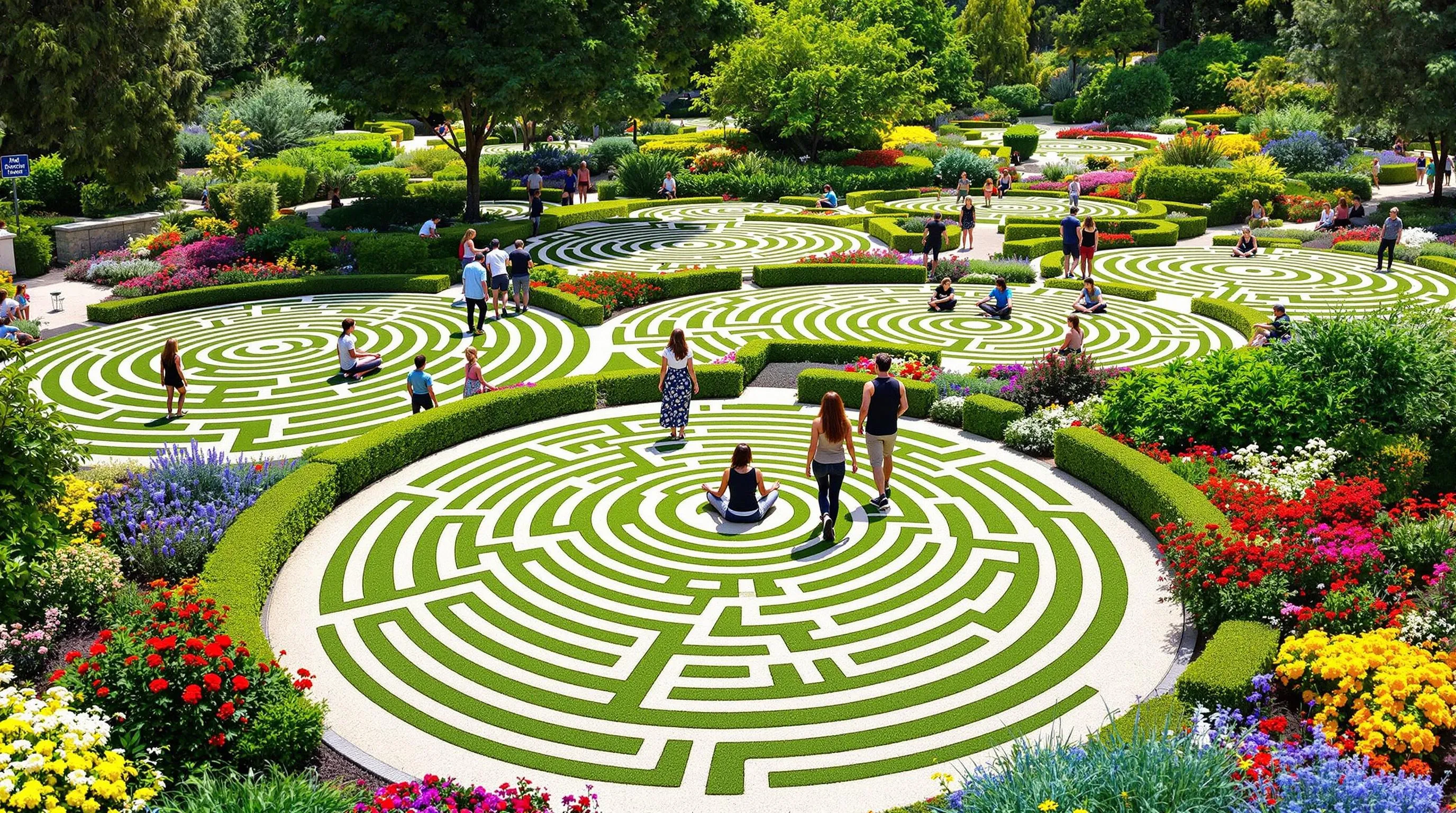
Looking to create a stunning labyrinth garden? These ten classic labyrinth patterns offer centuries of design wisdom that you can incorporate into your outdoor space. Each pattern carries its own historical significance and visual appeal while maintaining the meditative benefits that make labyrinths so special.
The Traditional Cretan Labyrinth Design
The Cretan labyrinth represents the oldest and most recognizable labyrinth pattern, dating back over 4,000 years. This seven-circuit design features a simple yet elegant pattern that winds back and forth before reaching the center. You’ll find this classic form depicted on ancient coins from Knossos and referenced in Greek mythology through the tale of Theseus and the Minotaur. Creating this pattern in your garden provides both historical authenticity and striking visual appeal. The symmetrical layout works well in circular spaces with diameters ranging from 15 to 40 feet, making it adaptable for various garden sizes.
The Medieval Cathedral Pattern
The Chartres labyrinth pattern, found in France’s famous 13th-century Chartres Cathedral, offers a more complex and ornate design for your garden space. This eleven-circuit masterpiece divides into four quadrants with a distinctive six-petaled rosette at its center. Unlike the Cretan design, the Chartres pattern incorporates turns that create a longer, more contemplative journey. You can recreate this medieval wonder using contrasting materials like light and dark stones or varying plant heights to emphasize the intricate pattern. This design typically requires more space, with ideal dimensions starting at 40 feet in diameter, making it perfect for larger garden areas where it can serve as a magnificent focal point.
The Classical Roman Labyrinth
The Roman labyrinth introduces a more angular aesthetic with its distinctive square or rectangular format. These patterns feature right-angled turns rather than the curved lines found in other designs. Roman labyrinths appear in ancient mosaics throughout the former empire, from North Africa to Britain. You can easily adapt this style to fit modern rectangular garden spaces, making it particularly suitable for urban settings or areas with spatial constraints. The clean lines of Roman patterns work beautifully with contemporary hardscaping materials like brick pavers or concrete, creating a striking geometric feature that bridges ancient and modern design sensibilities.
The Baltic Wheel Pattern
The Baltic Wheel labyrinth, originating from Northern Europe’s coastal regions, features a distinctive design with walls arranged in a pattern resembling spokes on a wheel. Dating back to Bronze Age fishing communities, these stone labyrinths were traditionally built near shorelines. You can recreate this unique pattern using stones, low hedges, or even painted markers on a gravel base. The Baltic Wheel typically contains seven or eight circuits and works well in circular spaces with diameters of 20-30 feet. Its open design allows for excellent visibility throughout the garden while maintaining the meditative walking experience that defines all true labyrinths.
The Chakra-Vyuha Design
The Chakra-Vyuha pattern draws inspiration from ancient Indian traditions, where it symbolized the battlefield formation described in the Mahabharata epic. This spiral-based design features seven concentric rings representing the seven chakras in yogic tradition. You can create this pattern using colorful plants that correspond to traditional chakra colors—violets for crown chakra, blues for throat chakra, and so on. This design works beautifully in circular gardens with 25-35 foot diameters and offers a unique opportunity to incorporate symbolic elements from Eastern spiritual traditions into your meditative garden space.
The Santa Rosa Labyrinth
The Santa Rosa labyrinth, a modern classic designed by Lea Goode-Harris in 1997, adds a heart-shaped space along the path to the center. This seven-circuit design combines traditional elements with contemporary touches, making it increasingly popular for modern garden installations. You can carry out this pattern in spaces as small as 12 feet in diameter, making it perfect for intimate garden settings. The heart element creates a natural pause point for reflection, improving the meditative journey. Consider using fragrant herbs or small flowering plants to mark this special section of your labyrinth path.
The Classical Concentric Design
The Concentric labyrinth features simple, unbroken circular paths that nest within each other, creating a hypnotic spiral effect. This minimalist design dates back to prehistoric rock carvings and appears in cultures worldwide. You can easily scale this pattern to fit spaces as small as 10 feet in diameter, making it ideal for compact gardens or courtyard spaces. The simplicity of this design allows for creative material choices—consider using contrasting ground covers like thyme and moss to define the paths, or carry out a mowed pattern in a lawn for a temporary installation that can be changed seasonally.
The Neo-Medieval Pattern
The Neo-Medieval labyrinth adapts classic cathedral designs with simplified pathways that maintain the spiritual essence while being easier to construct. These patterns typically feature seven or nine circuits with balanced quadrants. You can create this pattern using brick borders filled with contrasting materials like gravel, mulch, or low-growing plants. Neo-Medieval designs work well in spaces 30-50 feet in diameter and offer excellent opportunities for incorporating seating areas or contemplative spaces at key turning points. This pattern strikes a perfect balance between historical authenticity and practical garden design.
The Contemporary Dual-Path Design
The Dual-Path labyrinth introduces an innovative concept where two separate paths intertwine but never cross, allowing two people to walk simultaneously while having separate journeys. This modern design creates opportunities for shared yet individual meditative experiences. You can carry out this pattern using different colored stones or varied plantings to distinguish the two paths. This design typically requires more space, with ideal dimensions starting at 35 feet in diameter. Consider adding small resting areas where the paths come close to each other, creating moments of connection within the separate journeys.
The Classical Turf Labyrinth
The Turf labyrinth pattern, inspired by ancient English designs like the famous Saffron Walden labyrinth, features raised grass paths separated by shallow trenches. These distinctive patterns have been maintained in village greens across England for centuries. You can recreate this traditional design by establishing raised turf paths approximately 12-18 inches wide with 6-inch trenches between them. Regular mowing and occasional re-cutting of the trenches maintains the pattern’s clarity. This design works beautifully in lawn areas of 30-50 feet in diameter and creates a visually striking pattern that changes with the light throughout the day, casting subtle shadows that enhance the three-dimensional effect.
7 Space-Saving Labyrinth Ideas for Small Gardens
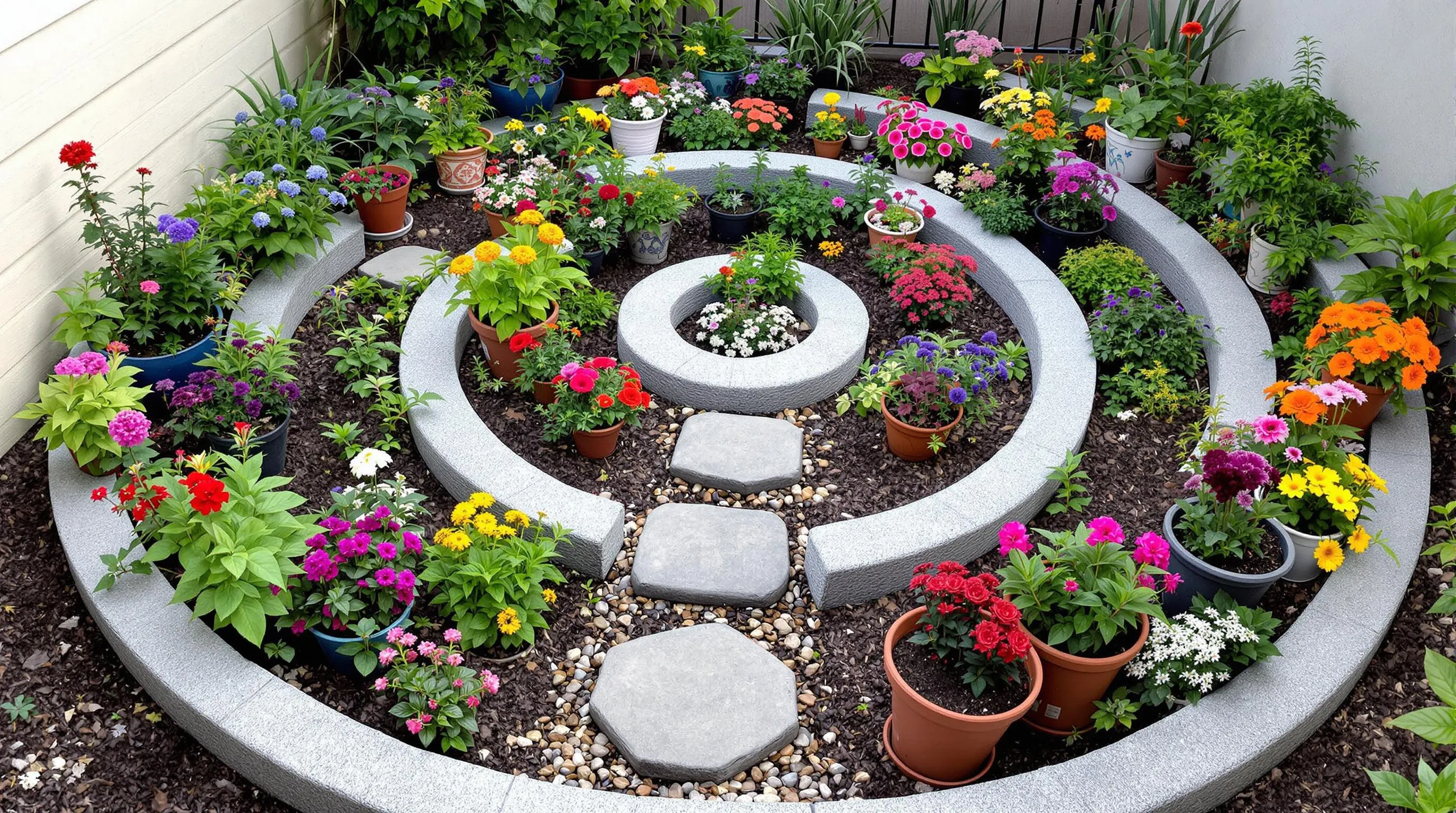
Limited outdoor space doesn’t mean you have to abandon your dream of a meditative labyrinth garden. These innovative designs prove that meaningful pathways can flourish even in compact areas.
Miniature Herb Labyrinths
Create a functional and aromatic labyrinth using low-growing herbs in a compact space. Plant thyme, oregano, creeping rosemary, or chamomile to form the winding paths of your miniature labyrinth. These herbs not only define your labyrinth pattern clearly but also release calming scents when brushed against or walked upon. You can design this in as little as a 4×4 foot space using a circular or square pattern, with paths just wide enough for finger-tracing or small stepping stones. The center can feature a focal herb like lavender or a small ornament to mark your destination.
Vertical Wall Labyrinths
Transform a blank garden wall into a living labyrinth that takes up zero ground space. Using a trellis system or wall-mounted planters, create a vertical pattern with climbing plants like ivy, jasmine, or climbing roses following your labyrinth design. Incorporate different colored foliage or flowering plants to clearly define the paths. Instead of walking the labyrinth physically, you’ll trace the path visually or with your finger, achieving the same meditative benefits. This vertical adaptation works beautifully on privacy fences, garden shed walls, or any vertical surface receiving adequate sunlight.
Patio Tile Labyrinths
Convert your existing patio or balcony floor into a labyrinth by using removable tile decals or outdoor paint to create the pattern. This non-permanent solution requires no additional space and can be changed seasonally. Choose weather-resistant materials in contrasting colors to make the pattern stand out. A 5-circuit classical design fits comfortably in an 8×8 foot area, making it perfect for apartment balconies or small concrete patios. When not actively used for meditation, the design serves as an artistic element in your outdoor space.
Container Garden Labyrinths
Arrange a series of potted plants in a labyrinth pattern on your patio, rooftop, or small yard. Use containers of varying heights to create visual interest while maintaining the essential pathway design. Select compact plants like boxwood, dwarf conifers, or colorful annuals that won’t outgrow their containers quickly. The beauty of this approach lies in its flexibility—you can rearrange your labyrinth seasonally or move it entirely if needed. A 3-circuit design can be created in a 6×6 foot space using 20-25 containers.
Stepping Stone Mini-Labyrinths
Create a small-scale labyrinth using decorative stepping stones set into gravel, mulch, or groundcover. The stones form the path rather than the walls, inverting the traditional labyrinth concept while maintaining its meditative function. This design can fit into a corner of your garden in as little as 25 square feet. Use flat, weather-resistant stones in shapes and colors that complement your garden aesthetic. The spaces between can be planted with creeping thyme or moss for a lush, unified look.
Zen Garden Tabletop Labyrinths
For the ultimate space-saver, design a tabletop labyrinth inspired by Japanese zen gardens. Using a shallow wooden tray filled with fine sand or small pebbles, create your labyrinth pattern with a miniature rake. Add tiny plants or stones to mark the center and boundaries. This portable meditation tool can be placed anywhere in your garden when weather permits, then moved indoors during inclement conditions. The finger-tracing motion offers similar contemplative benefits to walking a full-sized labyrinth.
Seasonal Lawn Labyrinths
Temporarily mow a labyrinth pattern into an existing lawn for special occasions or seasonal meditation practices. By simply cutting grass at different heights, you can create a visible pattern that disappears with normal mowing when no longer needed. This approach requires no permanent changes to your garden and works in spaces as small as 10×10 feet for a simple 3-circuit design. Mark the center with a portable garden ornament or meditation cushion to complete the experience.
Natural Materials to Consider for Your Labyrinth Path
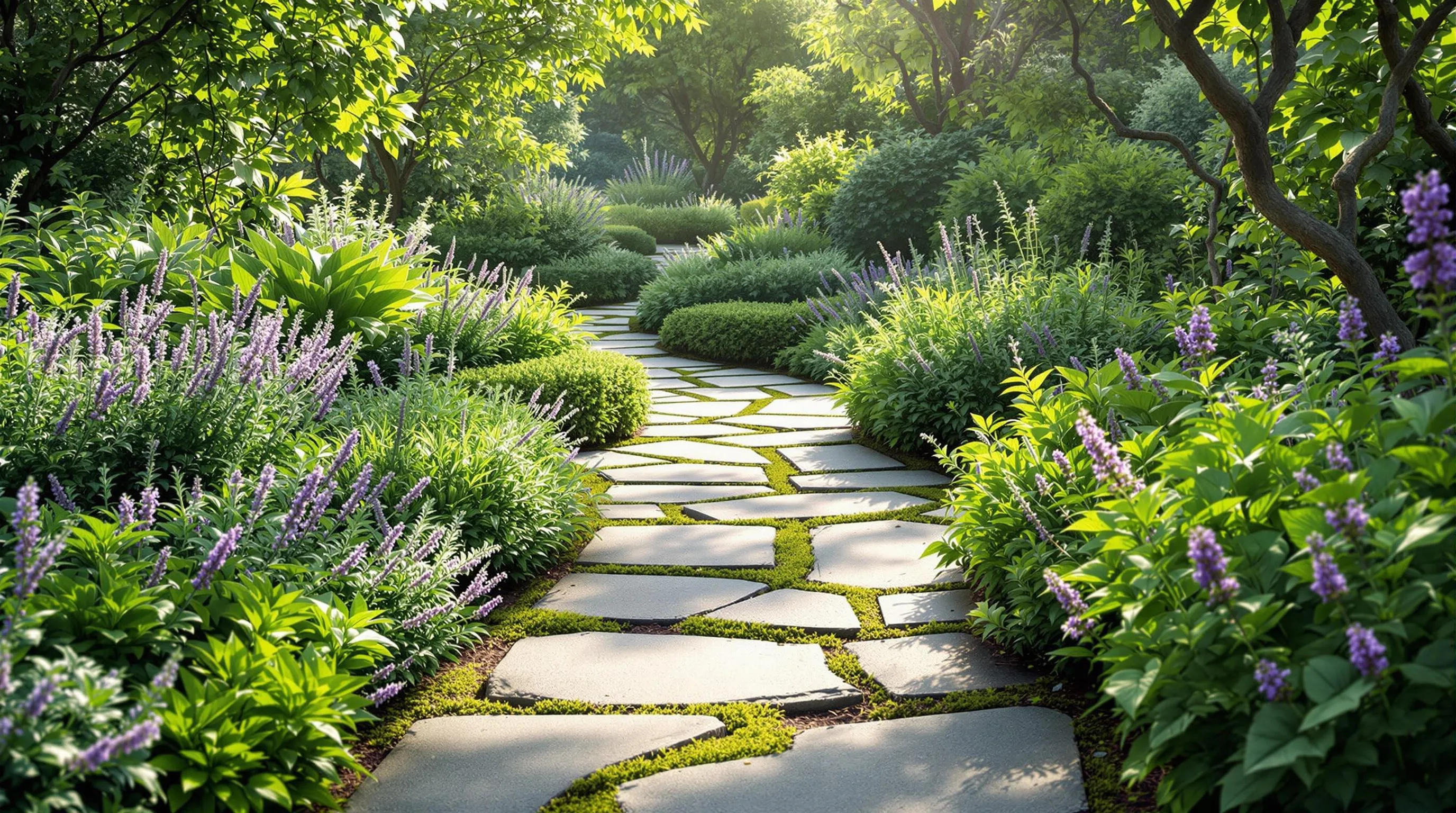
Choosing the right materials for your labyrinth path enhances both its aesthetic appeal and meditative qualities. Natural elements create a harmonious connection with the surrounding industry while providing practical benefits for your garden sanctuary.
Stone and Pebble Pathway Options
Stone pathways offer durability and timeless elegance to your labyrinth garden. River rocks create smooth, rounded surfaces perfect for barefoot walking meditations, while flagstone provides flat, stable footing with natural color variations. Gravel and pebbles deliver a satisfying crunch underfoot that can enhance mindfulness during walks and provide excellent drainage during wet seasons. For a more polished look, consider crushed granite or decomposed granite that compacts well over time, creating a firm surface that remains permeable. Local fieldstone adds regional character and reduces transportation costs while limestone creates high contrast paths that stand out against green surroundings. For budget-conscious gardeners, recycled concrete broken into irregular pieces offers an eco-friendly alternative that weathers beautifully over time.
Living Plant Borders and Hedges
Living borders transform your labyrinth into a verdant retreat that evolves with the seasons. Low-growing herbs like thyme, chamomile, and creeping rosemary release aromatic oils when brushed against, captivating your senses during walks. Lavender and sage create structured borders with the added benefit of attracting pollinators to your garden space. For permanent structure, consider boxwood or yew for traditional formal hedges that can be precisely trimmed to maintain clean lines. In warmer climates, drought-resistant options like santolina or germander provide silver-gray foliage that contrasts beautifully with stone pathways. Annual plants like alyssum or lobelia offer temporary borders that can be changed seasonally, while native grasses provide movement and sound as they rustle in the breeze. For edible borders, consider strawberries, chives, or trailing nasturtiums that combine beauty with functionality in your meditative space.
Incorporating Water Features into Your Labyrinth Design
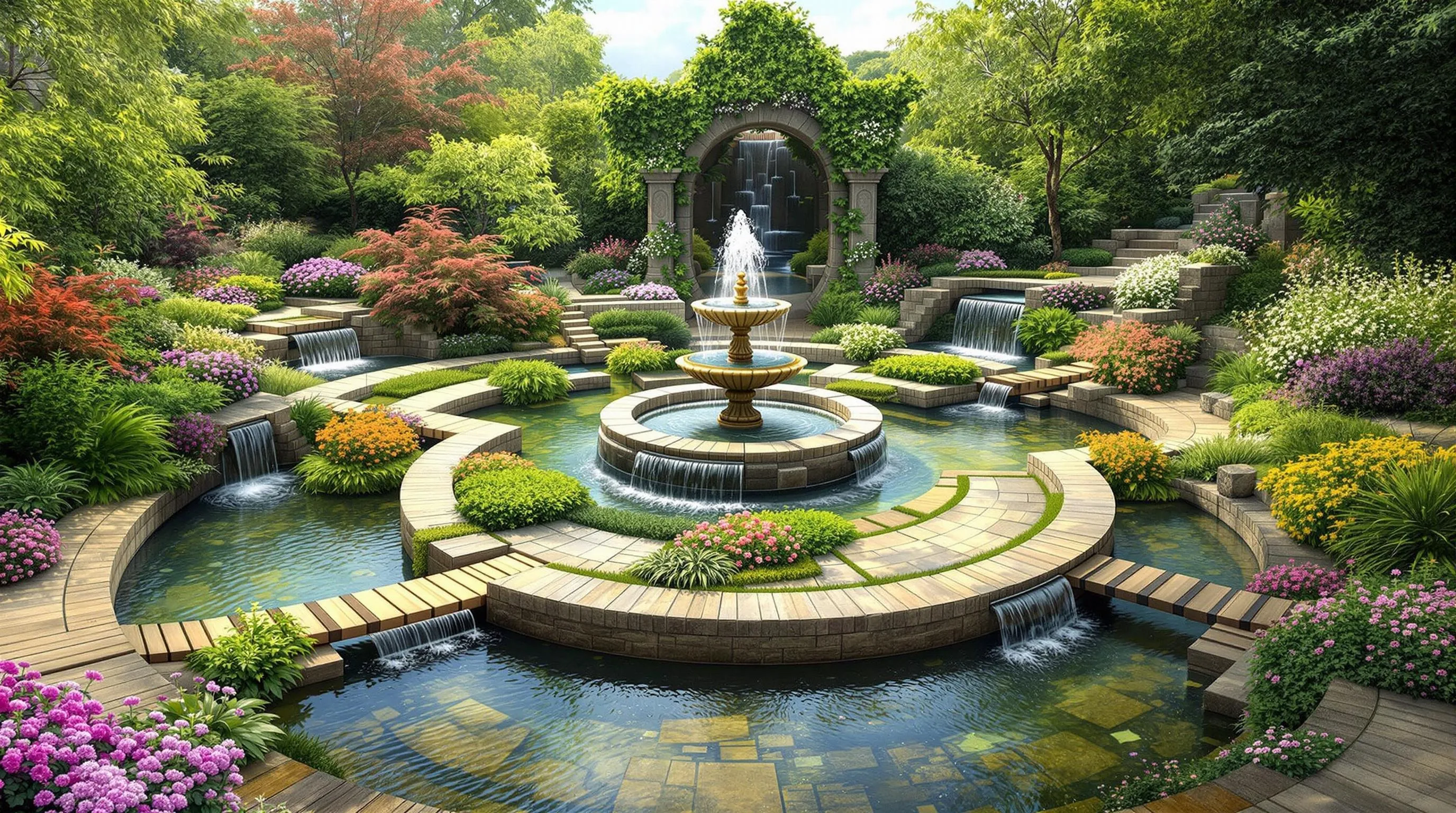
Water features add a captivating dimension to labyrinth gardens, improving both visual appeal and the meditative experience. A simple fountain at the center creates a soothing destination point, with the gentle sound of flowing water deepening your relaxation as you walk the path. Consider installing a shallow reflecting pool that mirrors the sky and surrounding plantings, adding depth and contemplative qualities to your labyrinth. For a more dramatic effect, incorporate a series of small waterfalls or cascades along the journey, creating rhythmic sounds that guide your meditation. Miniature bridges over narrow water channels can serve as transition points between different sections of your labyrinth, adding both functionality and symbolic meaning to crossing thresholds. Even simple elements like bird baths strategically placed at turning points invite wildlife while providing peaceful pausing spots. In dry climates, consider a rill—a narrow water channel—that traces part of your labyrinth path, combining practical irrigation with aesthetic appeal. Whatever water feature you choose, ensure it’s properly scaled to your labyrinth size and includes appropriate filtration and maintenance systems to keep it clear and functioning throughout the seasons.
Illuminating Your Labyrinth Garden for Evening Meditation
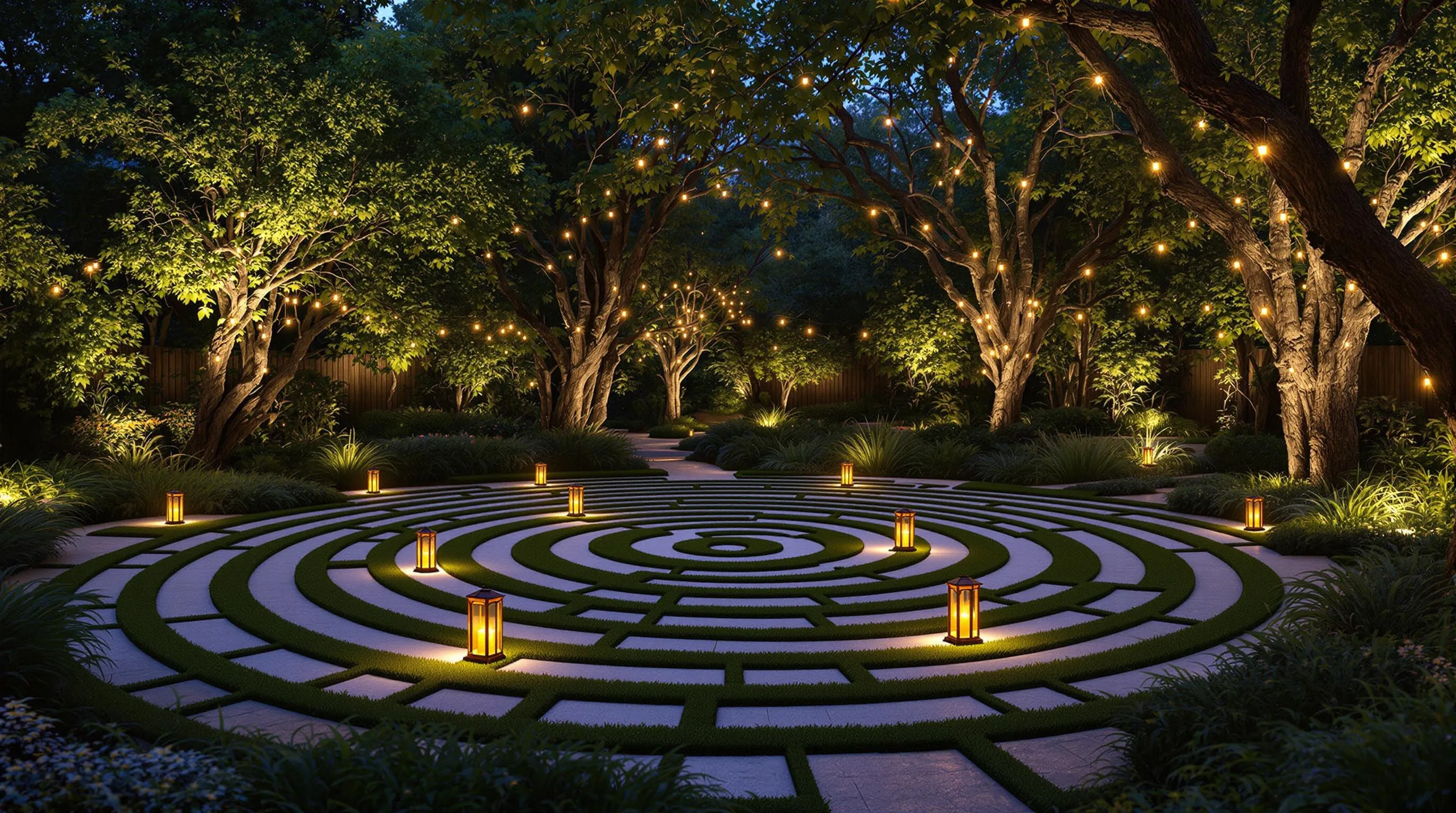
Transform your labyrinth garden into a magical nighttime retreat with strategic lighting that enhances both safety and ambiance. Solar-powered path lights placed along the borders create a gentle glow that guides your steps without harsh brightness that would disrupt meditation. Consider installing low-voltage LED string lights wrapped around nearby trees or pergolas to cast a soft, dreamy illumination across your labyrinth. Lanterns positioned at key points—especially at the entrance, center, and turns—serve as both navigational markers and symbolic beacons for your journey inward. For a truly enchanting experience, incorporate color-changing lights that can be adjusted to match different meditation themes or your mood. Weather-resistant candle holders with flameless candles offer a flickering effect that mimics traditional sacred spaces while maintaining safety. Remember to position all lighting fixtures slightly away from the actual path to prevent tripping hazards while creating a defined outline that’s visible even on the darkest nights, allowing you to practice walking meditation long after sunset.
Seasonal Considerations for Year-Round Labyrinth Beauty
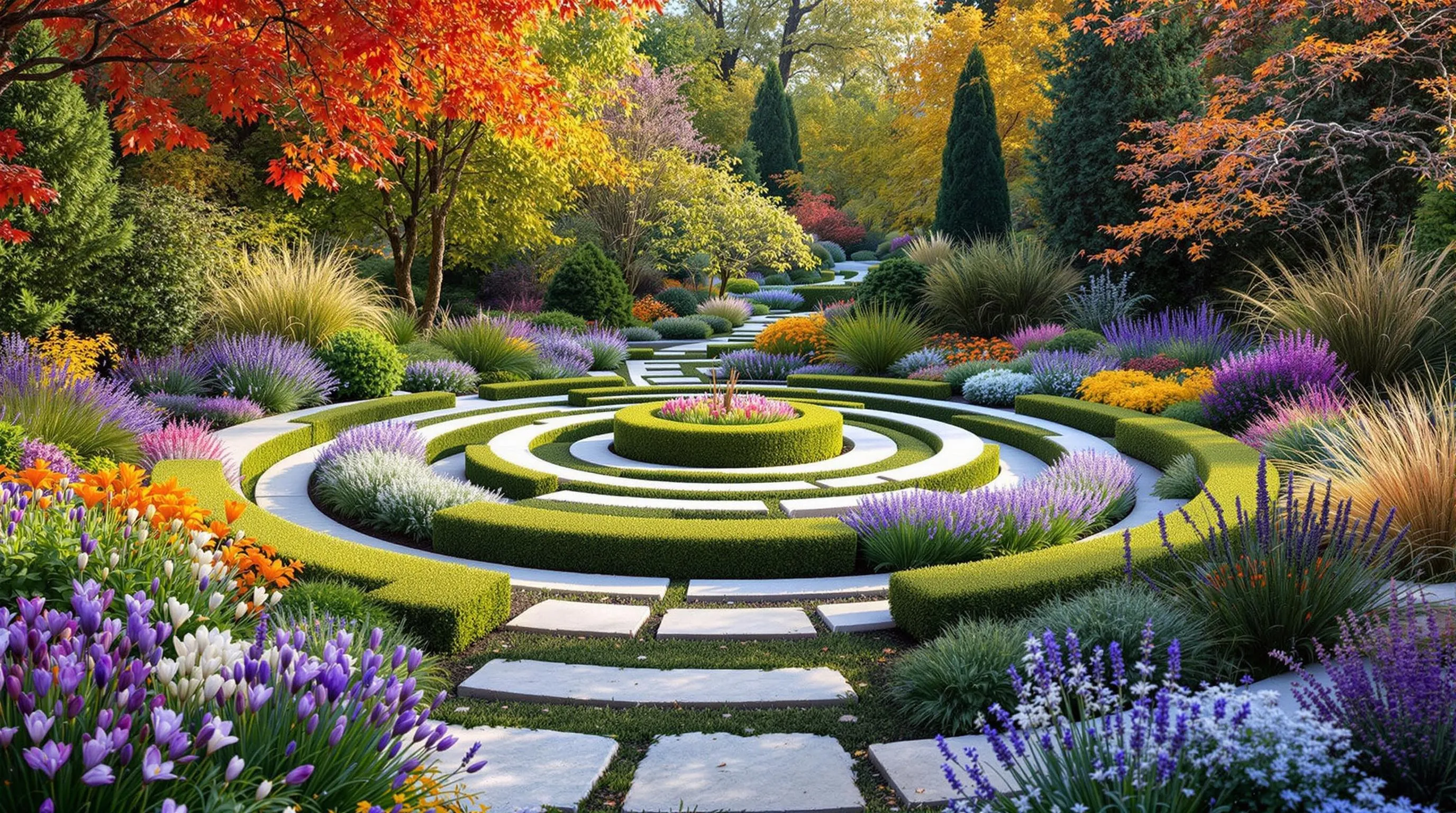
A truly magnificent labyrinth garden doesn’t fade with the changing seasons—it transforms and reveals new dimensions of beauty throughout the year. Planning for seasonal transitions ensures your meditative space remains inviting in every season. Incorporate early-blooming bulbs like crocuses and snowdrops for late winter interest, followed by colorful spring perennials such as lavender and thyme that line your pathways with fragrance. Summer calls for drought-resistant plants like ornamental grasses and sedums that maintain structure during hot months. For fall, integrate plants with striking autumn foliage like dwarf maples or burning bush, which create dramatic color shifts. Winter interest comes from evergreen elements like boxwood borders, ornamental cabbages, or structural elements such as stone cairns that stand out against snow. Consider how your path materials weather through seasonal changes—some stones may become slippery when wet, while gravel might need occasional replenishing after heavy rains. By thoughtfully selecting plants and materials that showcase each season’s unique characteristics, you’ll create a labyrinth garden that offers year-round inspiration for your walking meditations.
Budget-Friendly DIY Labyrinth Garden Projects
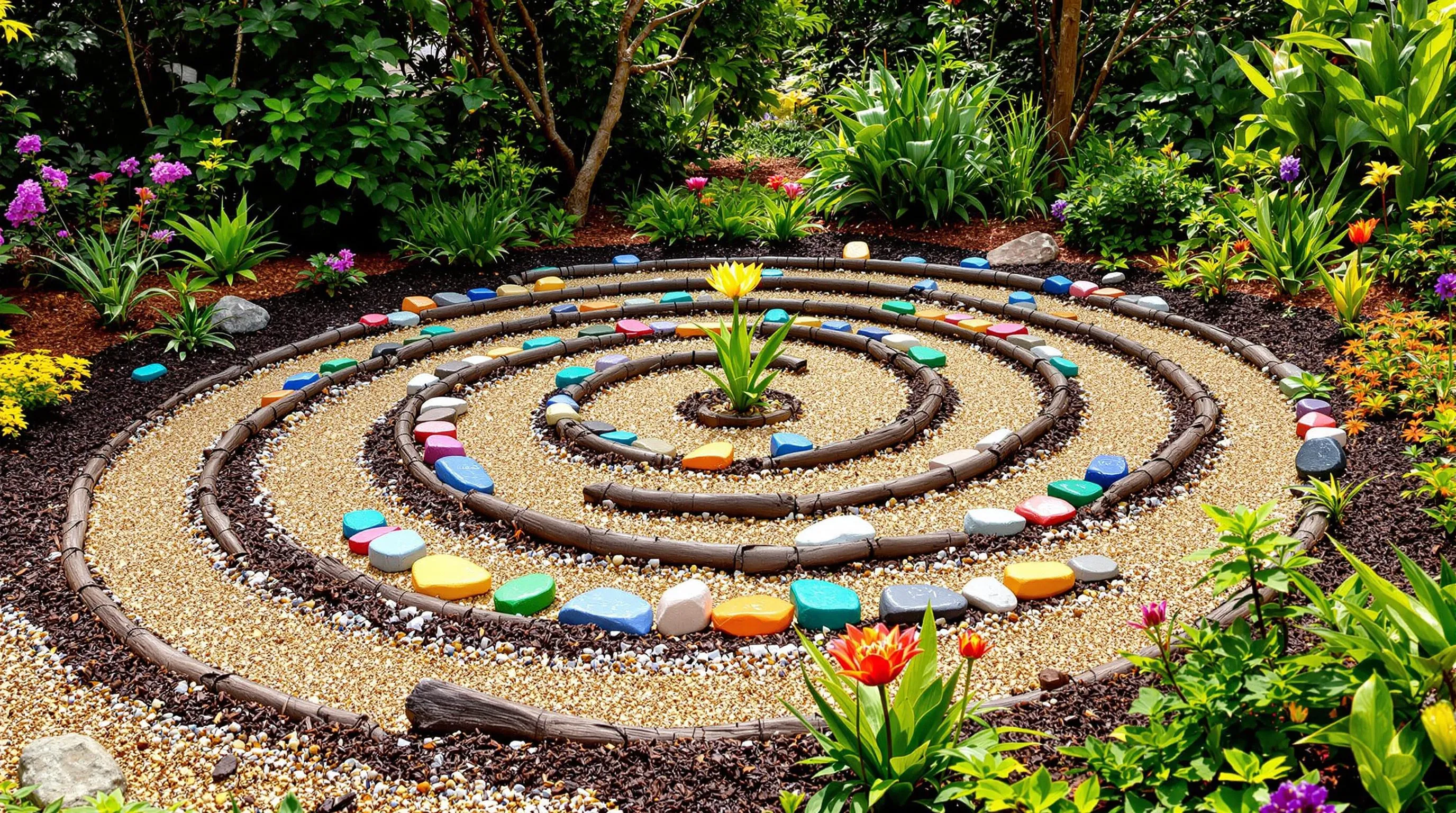
Creating a labyrinth garden doesn’t have to drain your wallet. With some creativity and basic materials, you can create a meaningful meditative space without very costly. Start by designing a simple labyrinth pattern on paper, scaling it to fit your available space. Use items you already have, like fallen branches, pinecones, or recycled bricks to outline your paths. Consider painting rocks in bright colors to serve as path markers—this works especially well for temporary installations or when introducing children to the concept. Rope labyrinths offer another affordable option; simply lay out natural fiber rope on an existing lawn to create a non-permanent design you can adjust as needed. For more permanent but still budget-conscious options, use mulch to define walking areas against grass, or plant inexpensive ground cover seeds to create living boundaries. Even old garden hoses can be repurposed to outline a temporary labyrinth pattern until you’re ready for something more permanent. Remember, the value of a labyrinth lies not in its cost but in the mindful experience it provides.
Therapeutic Benefits of Creating and Walking a Garden Labyrinth
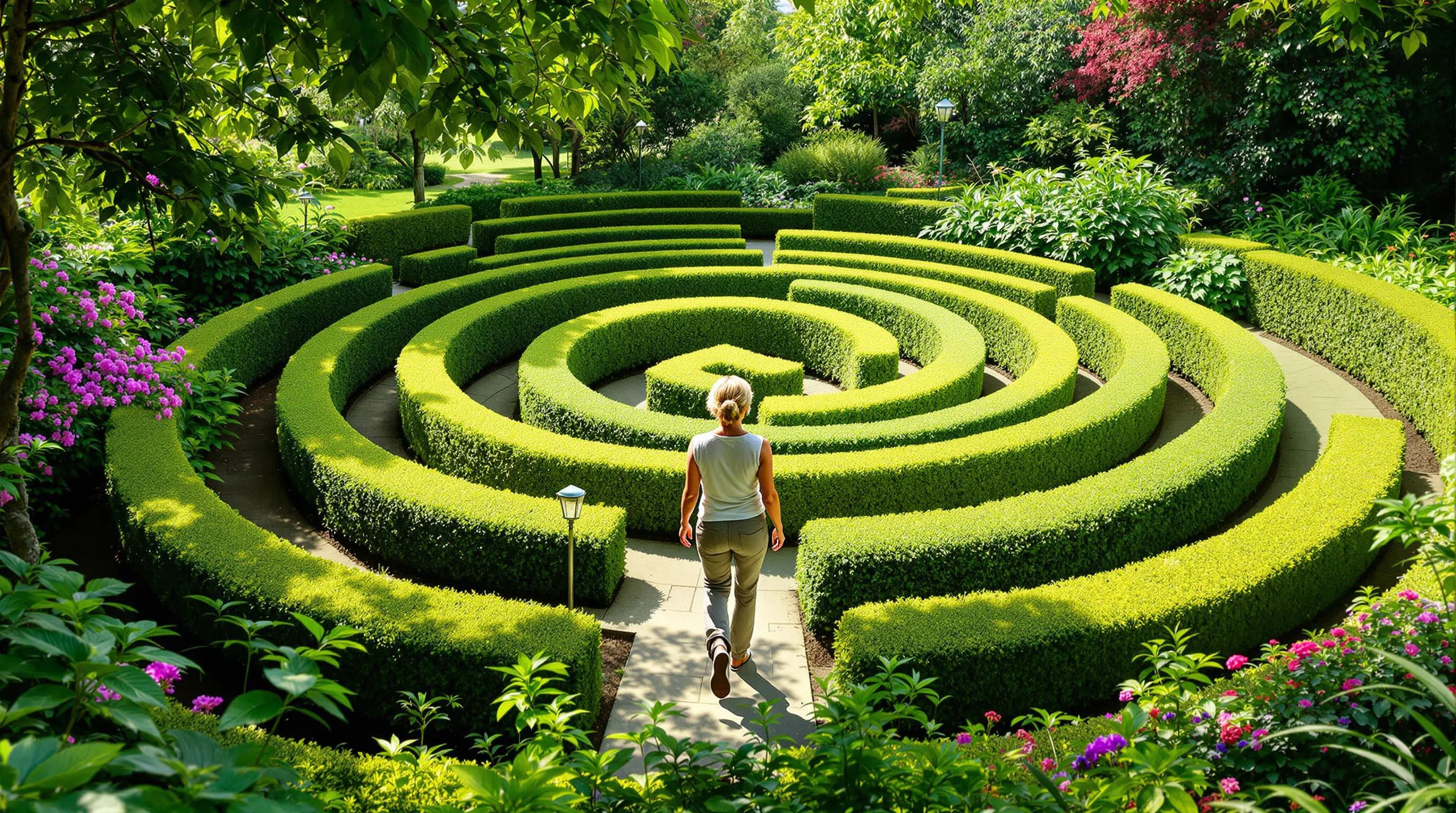
Creating and walking a garden labyrinth offers many health benefits beyond just improving your outdoor space. These ancient patterns serve as powerful stress-reduction tools, with studies showing regular labyrinth walking can lower blood pressure and heart rate by up to 20%. The rhythmic movement of following a single path activates your parasympathetic nervous system, triggering the relaxation response and reducing cortisol levels. Many therapists recommend labyrinth walking for anxiety management, as the meditative process helps quiet racing thoughts and promotes mindfulness. The physical act of building your labyrinth provides therapeutic benefits too—connecting with natural materials and captivating in purposeful creation can reduce symptoms of depression by up to 30%. Walking the completed path regularly improves cognitive function, with research indicating enhanced problem-solving abilities and increased creativity following labyrinth meditation sessions. You’ll also experience improved sleep quality, as the mindful walking helps regulate circadian rhythms and decrease insomnia. Whether you’re creating or walking your garden labyrinth, you’re participating in an ancient practice scientifically proven to enhance both mental and physical wellbeing.
Maintenance Tips to Keep Your Labyrinth Garden Looking Perfect
Whether you’ve created an elaborate stone design or a simple rope labyrinth your garden requires regular attention to maintain its meditative quality. Pull weeds promptly to keep paths clearly defined and trim any living borders before they encroach on walking areas.
Check hardscape elements seasonally for shifting or damage especially after freeze-thaw cycles. Consider applying an eco-friendly weed preventer along paths to reduce maintenance time and refresh mulch or gravel annually to keep surfaces even and inviting.
Remember that your labyrinth is more than just a garden feature—it’s a sacred space for reflection. By maintaining its physical structure you’ll preserve its spiritual purpose allowing you to continue your mindful journey for years to come.

